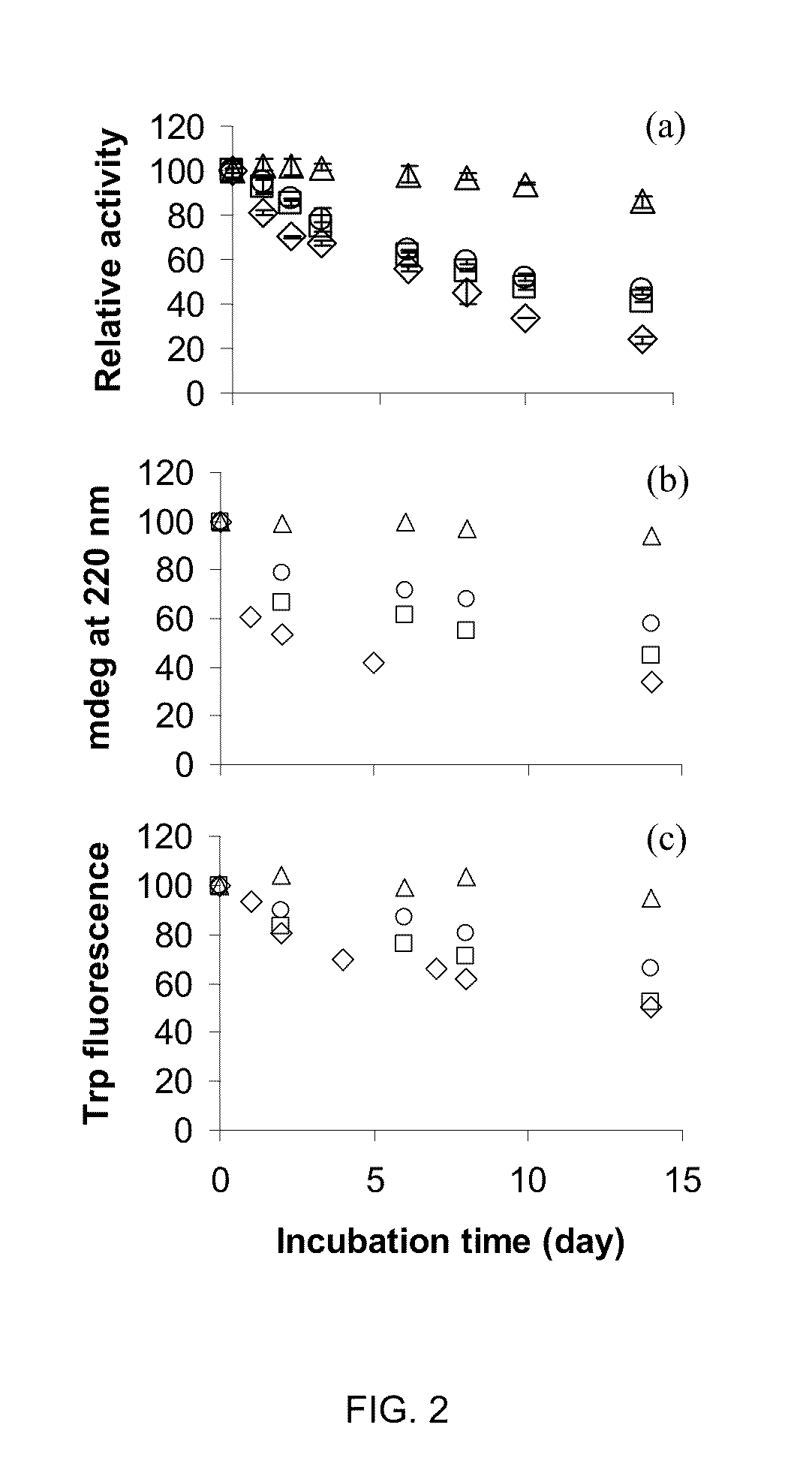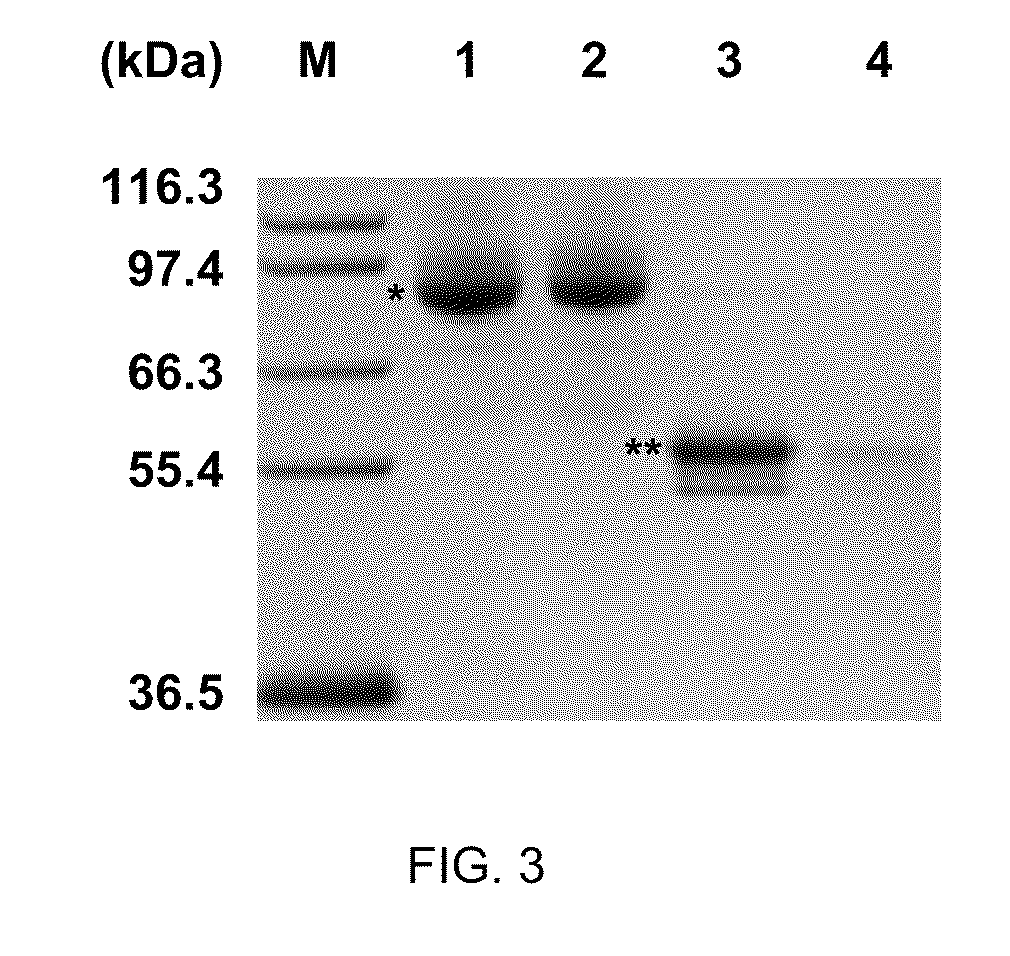Protein stabilization by domain insertion into a thermophilic protein
a thermophilic protein and domain technology, applied in the field of protein stabilization, can solve the problems of insufficient protein stability, risk alteration of the desired properties of a protein, and the approach that works for a specific protein may not always work for others, so as to improve the kinetic stability of ei and bla, enhance the stability of both ei and bla, and achieve the effect of largely maintaining activity and specificity
- Summary
- Abstract
- Description
- Claims
- Application Information
AI Technical Summary
Benefits of technology
Problems solved by technology
Method used
Image
Examples
Embodiment Construction
[0024]Limited stability is a common problem associated with many proteins. The results of rational, combinatorial and data-driven design of highly stable proteins have revealed different paths for stabilization. This underscores the difficulty in developing a general strategy for enhancing protein stability and the importance of individual structural contexts in the success of conventional stabilization methods. Enhanced stabilization achieved by these conventional methods involves changes in side chains of target protein residues usually in the form of point mutations. These changes very often compromise a protein's intrinsic properties. Rational and directed evolution approaches can sometimes result in identification of protein variants with improved stability without compromised activity. However, mutations that improve stability with no compromise in activity or specificity are in general very rare and difficult to predict, especially for a large protein with multiple discontinu...
PUM
| Property | Measurement | Unit |
|---|---|---|
| Time | aaaaa | aaaaa |
| Intrinsic viscosity | aaaaa | aaaaa |
| Stability | aaaaa | aaaaa |
Abstract
Description
Claims
Application Information
 Login to View More
Login to View More - R&D
- Intellectual Property
- Life Sciences
- Materials
- Tech Scout
- Unparalleled Data Quality
- Higher Quality Content
- 60% Fewer Hallucinations
Browse by: Latest US Patents, China's latest patents, Technical Efficacy Thesaurus, Application Domain, Technology Topic, Popular Technical Reports.
© 2025 PatSnap. All rights reserved.Legal|Privacy policy|Modern Slavery Act Transparency Statement|Sitemap|About US| Contact US: help@patsnap.com



